
Ranches, villages, trading posts and cavalry camps all existed in the Big Bend in the century prior to the park's establishment. A number of historic districts within the park protect the tangible evidence of human history in this region. Elsewhere remnants of solitary ruins, graves or camps also mark the spots where history was made.
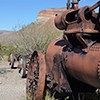
CastolonIn addition to the store, Castolon includes the oldest known adobe structure in Big Bend National Park (the Alvino House), another store building (Old Castolon), and numerous adobe ruins. For more information visit the Castolon page. 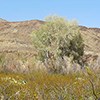
Glenn SpringIn the early 1900s Glenn Spring was the location of a candelilla wax manufacturing operation and accompanying village. It also became a military outpost after a violent nighttime raid in 1916. 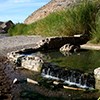
Hot Springs Historic DistrictThe Hot Springs Historic District preserves a rich history of human occupation from thousands of years ago to the not-so-distant past. Visitors can also enjoy a soak in an active hot spring a short walk from the area's historic structures. 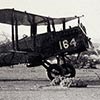
Johnson's RanchDistinct from other airfields in the area, the Johnson Ranch airfield was established solely for its strategic location, where combat troops and aircraft could be deployed in case of a border emergency. For more information visit the Johnson's Ranch page. 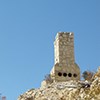
Mariscal MineAbandoned since the 1940s, and isolated by its remote location in the middle of Big Bend National Park, the Mariscal Mine is the best preserved mercury mining site in the state of Texas, and is a listed historic district on the National Register of Historic Places. For more information visit the Mariscal Mine page. |
Last updated: March 2, 2021
